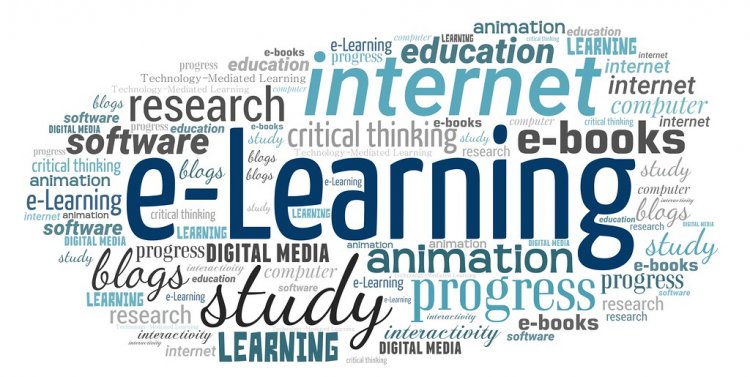The impact of technology on education and learning
Learn about the effects of technology on education and learning, including the advantages of online education and the potential drawbacks of digital distraction. Find out how modern technology is changing the way we approach schooling.

In the 21st century, technology has become an essential component of every industry. Since the invention of desktop computers in the 1980s, technology has been widely accepted. Since the 1990s, when the internet first gained popularity, and the 2000s, when smartphones first became widely available, the world has become a global community, with real-time connections between individuals and companies around the globe. Notably, the education and learning sectors have greatly benefited from technological advancements.
Technology has made education more accessible, convenient, and effective. The outbreak of the Coronavirus pandemic is a prime example of how technology has revolutionized the education system. With schools and universities shut down to contain the spread of the virus, online learning platforms became the go-to mode of education. Traditional classroom settings, which relied on face-to-face interactions with instructors, have now been replaced by online learning platforms. Students can now access educational resources from the comfort of their homes, allowing them to learn at their own pace and convenience. This approach has made education more flexible and accessible to students from different parts of the world.
Technology has made education more accessible, convenient, and effective. The outbreak of the Coronavirus pandemic is a prime example of how technology has revolutionized the education system. With schools and universities shut down to contain the spread of the virus, online learning platforms became the go-to mode of education. Traditional classroom settings, which relied on face-to-face interactions with instructors, have now been replaced by online learning platforms. Students can now access educational resources from the comfort of their homes, allowing them to learn at their own pace and convenience. This approach has made education more flexible and accessible to students from different parts of the world.
Technology has been a game-changer for children with disabilities, as it has provided them with the opportunity to learn in a more comfortable and inclusive environment. These children often face social and emotional challenges in traditional classroom settings, which can make learning difficult. By providing them with online learning platforms, technology has enabled them to study at their own pace without feeling discriminated against or stigmatized. This approach has made education more accessible and inclusive, allowing children with disabilities to develop their skills and achieve their full potential.
Not all students have the same interests when it comes to education. Some students may have a passion for subjects outside the traditional academic curriculum. For example, they may be interested in music, art, or fashion. Thanks to technology, these students can explore their interests and pursue learning opportunities that are tailored to their specific needs. Whether it's taking an online course, watching a tutorial, or collaborating with like-minded individuals, technology provides students with a range of resources that they can use to expand their knowledge in their chosen field. This has opened up new pathways for students to explore their passions and develop skills that can be applied to their future careers.
Another advantage of technology in education and learning is the possibility of expense savings. Since they can access course materials and tools from the convenience of their homes, online learning platforms have helped many students lower the cost of their education. Due to the abundance of online resources that are free or considerably less expensive than traditional textbooks, the price of textbooks and other educational materials has also greatly decreased. Students' transportation expenses, including fares for public transportation, can add up fast, particularly if they reside far from school or college.
In the past, students were limited to book knowledge and were often disconnected from the outside world. However, with the advent of technology, students can access a wealth of information and stay up-to-date with current events. This exposure to real-world issues and diverse perspectives has made students more knowledgeable and expanded their understanding of the world around them. By staying informed and connected, students can develop critical thinking skills, empathy, and a sense of global awareness. This has also helped them become more well-rounded individuals who can contribute positively to society.
Despite having numerous positive aspects, technology also has some drawbacks or disadvantages, which include:
1. Dependence on technology:
The easy availability of information on the internet may cause students to overlook the importance of developing critical thinking, problem-solving, and creative skills. As a result, they may become overly reliant on the internet for everything, and when given a project requiring critical thinking, they may simply use technology and justify it as a means of utilizing available resources. This dependence on technology has emerged as a major concern for children in the modern age.
2. Isolation:
The utilization of technology in education can limit opportunities for face-to-face interactions, potentially resulting in a decline in communication skills among students. This could particularly affect introverted individuals, causing them to further withdraw and struggle with expressing themselves in social situations, ultimately leading to social isolation.
3. Distraction:
The current generation of students tends to misuse technology, leading to increased distractions during their learning. Social media, online gaming, and other digital diversions can easily draw their attention away from their studies, impeding their ability to concentrate and absorb information. With many students currently learning online, it is not uncommon for them to attend class while keeping their cameras turned off and engaging in social media or online gaming, as observed during the lockdown period.
4. Inequality:
In Nepal, certain rural regions have yet to experience the benefits of technological progress. Consequently, individuals residing in such areas may not have access to the latest technological resources, resulting in a technological divide that leaves them behind in terms of technical skills and opportunities. This inequality is further exacerbated by the presence of economically disadvantaged students who may not have the means to obtain the latest technological tools, impeding their ability to receive the same level of education as their more technologically privileged counterparts.
5. Security and privacy:
Worries about security vulnerabilities, data leaks, and other privacy concerns are growing as technology continues to play an increasingly important role in education. Students and instructors equally may find themselves susceptible to various cyber dangers, such as hacking, phishing, and malware attacks, as a result of the pervasive use of online platforms and digital tools. The use of technology in education is becoming more prevalent, which has given hackers new opportunities to attack people who are weak and use their personal information against them.
Undoubtedly, technology is a blessing in the modern era; however, numerous students and individuals are misusing it. The correct utilization of technology can prove advantageous, but if it is abused, it can have detrimental effects on individuals.
What's Your Reaction?





































































































